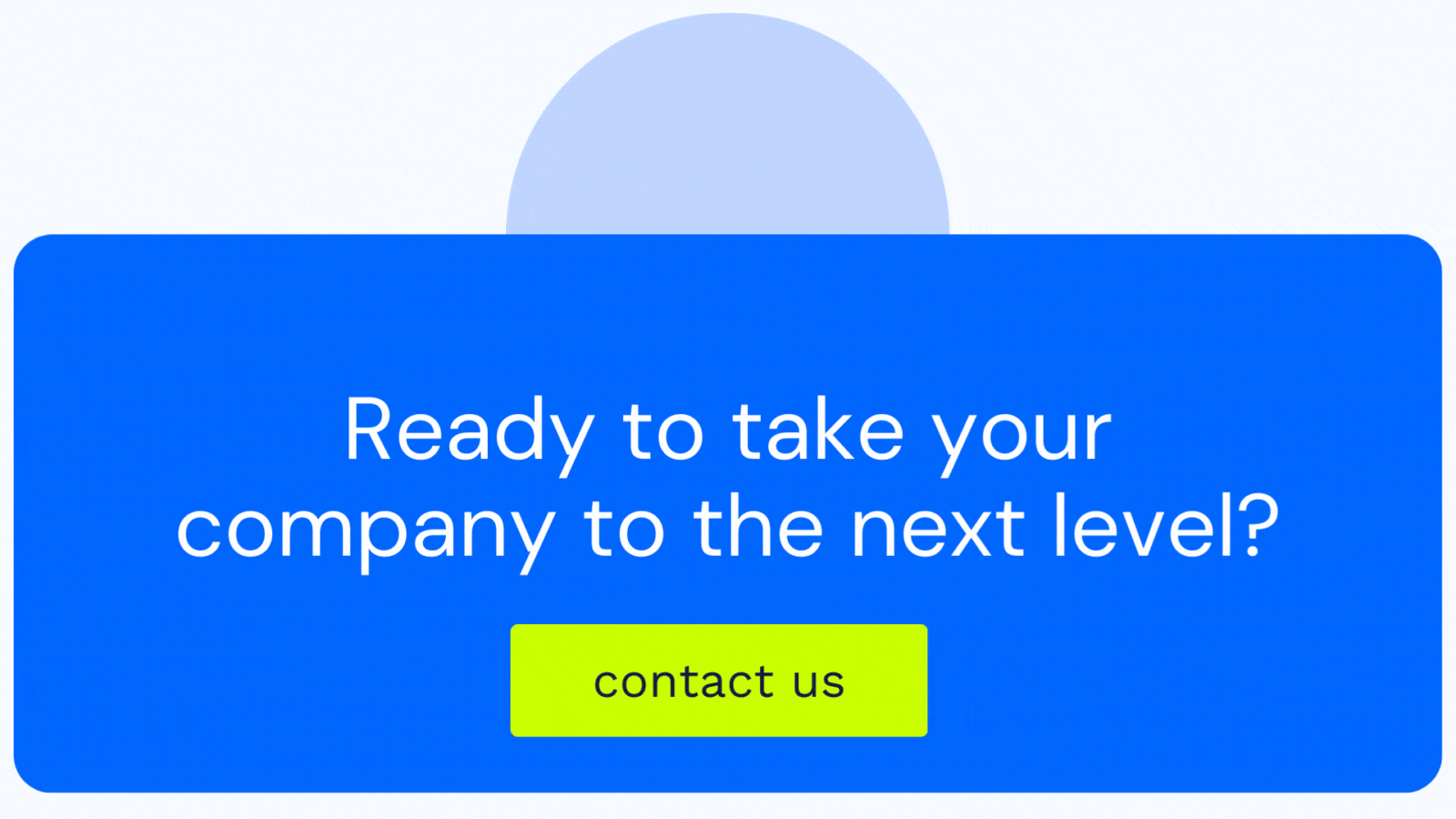The 5 Essential Elements of Customer-Focused Content

With AI technology like ChatGPT, anyone has the ability to whip up a decent blog in a matter of minutes. The question is, does faster always mean better? Churning out mediocre content won't make you a star in the blogging universe anymore. It's time to rethink your strategy.
You need to shift your focus to make a genuine impact and forge a strong connection with your target audience. Instead of centering your writing around your company, make it all about your customers! You should be speaking to, engaging, and resonating with them. Here's how in 5 steps.
.gif?width=740&height=400&name=Imagenes%20Internas%20para%20blog%20(12).gif)
Step 1: Know Your Audience Like a Close Friend
Imagine you have a close friend whom you've known for years. You know their likes and dislikes, their passions, and their struggles. This intimate understanding allows you to communicate with them in a way that truly lands because you know what matters to them. Similarly, understanding your audience is essential for creating impactful customer-focused content.
.png?width=400&height=216&name=Imagenes%20Internas%20para%20blog%20(16).png)
‣ Conduct Thorough Research
Conducting thorough research and customer interviews is key to achieving this level of understanding. Gather data on your existing customers, website visitors, and social media followers. Look for patterns and commonalities in their behavior, preferences, and pain points. Analyzing this data can uncover valuable insights that will guide your content strategy.
.png?width=400&height=216&name=Imagenes%20Internas%20para%20blog%20(17).png)
‣ Build Personas
Personas are fictional representations of your ideal customers based on real data and research. These personas encompass various aspects of your target audience, including demographics, behaviors, motivations, and goals.
When it comes to creating personas, there is an array of methods to choose from. However, one approach that has consistently proven to be highly impactful is Adele Revella's method. Unlike traditional methods that focus solely on demographics, Adele's approach centers around grouping personas based on their specific challenges.
This shift in perspective allows for a deeper understanding of your audience's motivations, pain points, and needs, leading to more meaningful and relevant content.
.png?width=400&height=216&name=Imagenes%20Internas%20para%20blog%20(18).png)
‣ Understand the Customer Journey
Once you have your personas, you can delve into creating customer journeys. Customer journeys map out a customer's various touchpoints and interactions with your brand from the initial discovery phase to making a purchase and beyond.
Understanding the journey your customers take helps you identify pain points, opportunities for engagement, and content needs at each stage.
.png?width=400&height=216&name=Imagenes%20Internas%20para%20blog%20(19).png)
‣ Perform Content Mapping
Content mapping is a valuable tool to align your content with the customer journey. It involves categorizing your content based on the buyer's journey stages and mapping it to specific customer personas. This process ensures you have relevant content for each persona and stage, making your communication more targeted and effective.
With these foundational elements in place, you can develop a solid content strategy and begin the content writing process. These critical steps serve as the compass that guides your copy, ensuring it aligns seamlessly with your customers' needs and desires. Without this thoughtful groundwork, your content risks wandering aimlessly, missing the mark, and failing to make the desired impact on your audience. It’s kind of like studying for a test rather than just winging it— and we want you to get an A+!
Step 2: Solve for Your Customers
Customers don't want to be bombarded with self-praising claims about how great a product or service is. You have probably rolled your eyes a few times after hearing a company tell you they are “the best out there.”
To create content that truly resonates with your audience, it's time to shift the focus away from boasting about your offerings and put your customers' needs front and center. Begin by asking yourself a fundamental question: "What problems do we solve for our customers?"
Now that you clearly understand your customer’s pain points, you can align your content strategy around addressing them head-on. Craft value-driven pieces that offer practical solutions, helpful tips, and relevant information. By positioning your brand as a problem solver, you become a trusted resource for your audience rather than just another company promoting its products.
Step 3: Use Customer-Centric Language
Imagine you're talking to a friend, trying to help them out with their challenges – that's the tone you should adopt in your content. Address your customers directly using phrases like "you deserve" and "you will feel" rather than bombarding them with self-centered company-centric language. This approach creates a personalized and empathetic connection.
Here’s an example:
Company-Focused: "At Instrumental Group, we take pride in creating engaging content. Our team consists of seasoned experts who are dedicated to delivering top-notch content tailored to your specific needs."
Customer-Focused: "Quit settling for mediocre content. Create content that truly captivates your readers and leaves a lasting impression. With inventive and personalized solutions, our team will help you drive results.”
While there’s a time and a place to discuss your company (like on your ‘About Us’ page), it's crucial to remember that, in general, your customers care less about who you are and more about what you can do for them.
Step 4: Let Your Customers Take the Stage
Your customers' voices hold immense power in shaping the perception of your brand. By showcasing their experiences and testimonials, you demonstrate authenticity and create a sense of community around your business. Here are some key strategies to leverage your customers' voices and strengthen your brand presence:
.png?width=400&height=216&name=Imagenes%20Internas%20para%20blog%20(15).png)
‣ Highlight Testimonials
Authentic testimonials are a valuable asset for your business. When customers share their positive experiences and satisfaction with your products or services, it builds trust among potential customers. Testimonials act as social proof, reassuring others that your brand delivers on its promises.
Here are some tips:
- Gather testimonials across various channels: Reach out to satisfied customers and request their feedback, whether it's through email, surveys, or social media. Include both written testimonials and video testimonials to appeal to different audiences.
- Showcase diversity in testimonials: Feature testimonials from different demographics and use cases to demonstrate your offerings' versatility and broad appeal.
- Display testimonials prominently: Place testimonials on your website's homepage, product pages, and landing pages to ensure they are easily accessible to visitors.
.png?width=400&height=216&name=Imagenes%20Internas%20para%20blog%20(14).png) ‣ Encourage Engagement
‣ Encourage Engagement
Actively encourage your customers to share their experiences, ask questions, and interact with your brand.
Here are some tips:
- Respond to comments and messages promptly: Show that you value your customers' opinions and are willing to engage in meaningful conversations with them.
- Run interactive contests or campaigns: Organize fun and interactive contests or challenges that encourage customers to participate and share their experiences while using your products or services. (Yes, even B2B companies can do this!)
- Create dedicated hashtags: Encourage customers to use specific hashtags when sharing their stories or photos related to your brand. This helps create a sense of unity among your customers and makes it easier for you to track and share user-generated content.
.png?width=400&height=216&name=Imagenes%20Internas%20para%20blog%20(13).png)
‣ Utilize Influencers & User-Generated Content
Influencer marketing can significantly expand the reach of your brand's message. Collaborating with industry influencers who have credibility and a genuine connection with your target audience can help amplify your brand's visibility and reputation.
When using influencers:
- Choose relevant influencers: Identify influencers whose values align with your brand and whose audience overlaps with your target customer base.
- Create authentic partnerships: Avoid overly promotional content and instead focus on building genuine relationships with influencers. Let them experience your products or services firsthand so that their endorsements feel authentic.
- Leverage different platforms: Work with influencers across various platforms such as Instagram, YouTube, or blogs to reach a wider audience and diversify your messaging.
User-Generated Content (UGC) can complement influencer marketing and take your brand's reach to the next level. By encouraging your customers to create and share content related to your products or services, you tap into the power of peer-to-peer recommendations and authentic storytelling.
Step 5: Quit Ignoring Feedback
When you receive negative feedback, resist the urge to become defensive. Instead, embrace it as an opportunity for growth (it’s easier said than done). Take the time to genuinely understand what went wrong and learn from the feedback.
Listening to your customers' concerns and actively making improvements shows that you value their opinions and are committed to delivering exceptional experiences. Addressing issues promptly can turn unhappy customers into loyal advocates, and those positive changes can resonate with your entire customer base.
Create a Stronger Brand with Customer-Focused Content
With these five steps, you're ready to start creating engaging content that centers around your customers' needs. Get ready to forge lasting connections and foster a stronger sense of brand loyalty!
While we've simplified the process, we understand that creating truly effective content requires dedication and effort. If you ever need some expert assistance, don't hesitate to click below and collaborate with our team of specialists.

.png?width=740&height=400&name=Imagenes%20Internas%20para%20blog%20(10).png)
.png?width=740&height=400&name=Imagenes%20Internas%20para%20blog%20(11).png)
.png?width=740&height=400&name=Imagenes%20Internas%20para%20blog%20(12).png)
.png?width=740&height=400&name=Imagenes%20Internas%20para%20blog%20(20).png)
